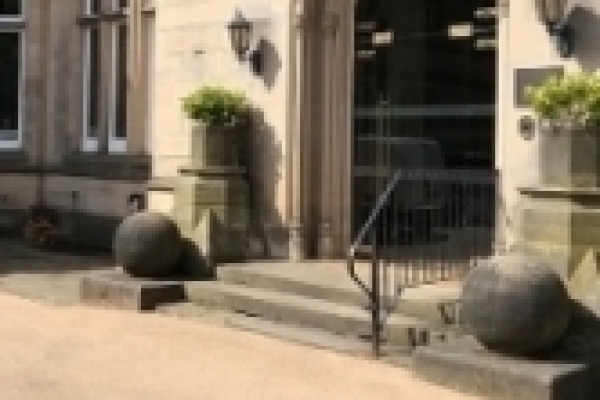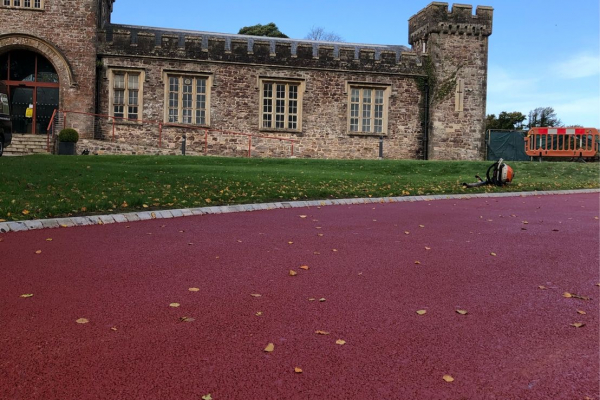When walking through park footpaths, making your way over decorative paving, or staring at school surfacing, it’s very easy to imagine these things were laid just just because they look nice. You might imagine the architect of the project, choosing these features seemingly at random. Maybe they had some spare budget? Maybe the coloured paving matched the architect’s own sense of style? Maybe the architect just felt like adding a few thrills?
None of these ideas are necessarily wrong. But they’re not right, either. The truth is that aesthetics have a massive impact, both implicitly and explicitly, on human psychology and human life. Applied in the right way, well-thought out aesthetics can mean the difference between an efficient and inviting place and a dreary, byzantine mess.
At NatraTex, we’re well aware of the positive practical effects our products can have on the public. In this article, we’ll go through some of these reasons.
Providing Interesting sights
Imagine you’re standing in an old street in an old city. Maybe London or Manchester. Look at the road, tar-like and uneven. Walk up and down the pavement and feel the cracks in the concrete paving stone. Take a moment to stare at the building nearest to you– it might be a house, a factory, or a shop. Look at the windows, covered in soot, and the sickly green-brown bricks.
It doesn’t look very nice, does it? It’s dreary and samey. Dull. Full of straight lines.
Now, imagine a garden. Huge beds of big, bright flowers of every colour that exists in nature. Lawns that seem to stretch on forever. Trees that seem to sprout from just the perfect place. Bushes that serve as natural boundaries. It’s a lot more interesting and inviting, isn’t it?
How Aesthetics Work
It’s the mixture of bright, bold colours and the lack of authoritarian straight lines, an embrace of the aesthetics of nature, that stimulates us in a way that pure utilitarian design just doesn’t.
And that stimulation is very important. According to research done by sociologist Saskia Sassen, the aesthetics of location help to establish its unique social identity. In turn, this helps to build pride and appreciation from the people who live there — which is very important for helping a community thrive.
Quite simply, a location with coloured paving, well-designed and laid decorative driveways, and gravel footpaths is much more likely to be a thriving community than a location with dull, cracked and worn-away sidewalks and footpaths. But it’s not just a community that thrives through the right application of aesthetics. Children do, too.
We’ve written at length why playgrounds are important, but we have to emphasize just how important colour is when it comes to designing a good playground. According to American Non-Profit KaBOOM!, being interesting to look at is one of the key features that makes a successful playground.
Development, Health and Safety
Speaking of kids, a thriving community and happy children aren’t the only reasons why visual stimulation is important. For young children, distinguishing bright colours is a key part of their early visual development, and from that early development comes early steps into true independence. From an early age, children learn the difference between red and green — stop and go.
As such, it’s a natural next step to combine colourful aesthetics in children’s spaces. Not only does this help their visual development, but it also helps to reinforce their steps towards independence. For example, you could have a playground which uses coloured paving to separate various climbing frames and sets, with their floor colours corresponding to the care that the children should take near. A merry-go-round could have a red surface, alerting the child not to approach until the wheel has stopped; a set of monkey bars could have orange surfacing to alert the children to be wary of people making their way across.
But playgrounds with coloured paving and school surfacing isn’t the only area where aesthetics are useful in health and safety settings. Think of blue park footpaths, green cycling lanes, and gravel footpaths to mark safe routes on hiking trails. These decorative pavings help to safeguard overall health and safety in a way which improves the visual aesthetics of any area — using the brightness of nature to improve the human landscape.
Have Questions? Get In Touch Today
At NatraTex, we believe in and recognise the importance of aesthetics — it’s one of the reasons that we offer the products we do. If you have any questions about how our coloured paving products can be used to improve the aesthetics of your landscape, get in touch with us today.
Can't See Your Question?
Ask Us >




